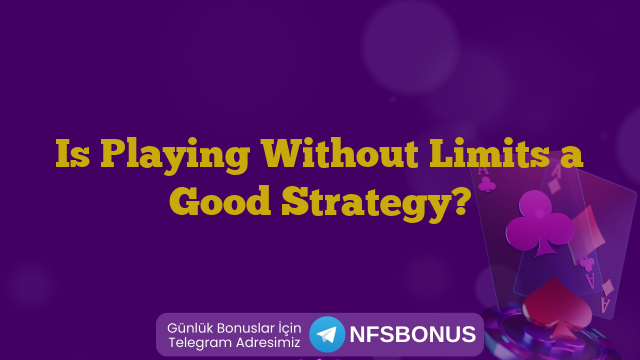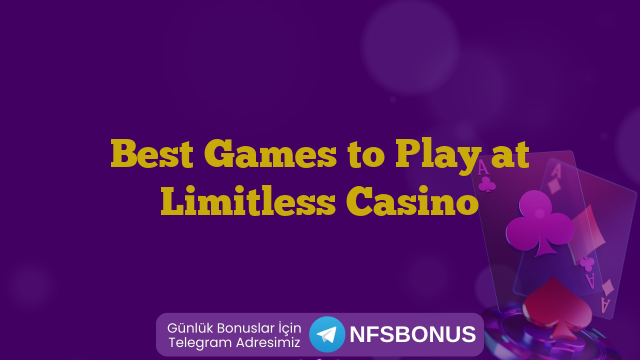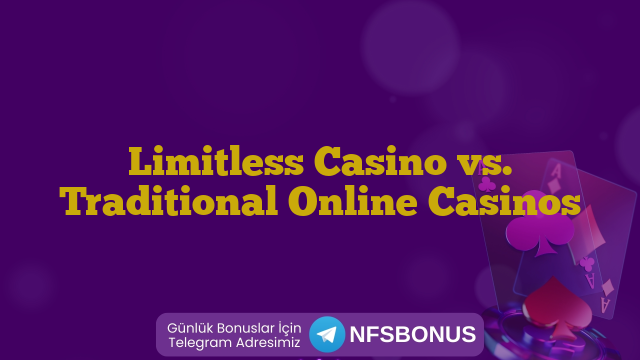The blog post titled Is Playing Without Limits a Good Strategy? explores the concept of playing without restrictions in sports and its implications. It begins by defining what playing without limits means and highlights its benefits, such as fostering creativity and enhancing enjoyment. However, it also addresses potential drawbacks, like safety concerns and the risk of skill imbalances. The article examines how this approach is practiced worldwide, showcasing various examples and strategies for implementation. Key influences on the concept are discussed, along with expert opinions on its overall effectiveness. A comparison of traditional approaches versus unlimited play is also included, leading to a conclusion that summarizes the key takeaways. The piece encourages readers to consider next steps in embracing a strategy of playing without limits, ensuring a balanced perspective on whether this approach is suitable in various contexts. Ultimately, the article prompts readers to ponder: Is playing the best way to enhance both performance and enjoyment?
Understanding The Concept Of Playing Without Limits
The concept of Is Playing without limits revolves around the idea of embracing freedom and creativity in various pursuits, especially in sports and play. This approach encourages individuals to move beyond traditional constraints, fostering an environment where exploration and innovation can flourish. By removing barriers, players can enhance their experience and performance, as they are free to experiment with their skills and strategies.
One of the most significant aspects of this concept is its potential to unlock new possibilities. When individuals engage in play without limits, they often discover unique solutions and techniques that can lead to remarkable skills development. This flexibility can also result in higher levels of enjoyment and engagement, which is essential for personal growth and lifelong learning.
- Key Characteristics Of This Strategy
- Emphasis on creativity and innovation.
- Focus on intrinsic motivation rather than external rewards.
- Encouragement of risk-taking in a safe environment.
- Promotion of teamwork and collaboration.
- Adaptability to individual preferences and learning styles.
- Enhanced problem-solving abilities.
- Fostering resilience through overcoming challenges.
The philosophy of Is Playing without limits extends beyond merely allowing freedom of movement. It also entails fostering a mindset that embraces challenges as opportunities for growth. Players are encouraged to view setbacks not as failures, but as critical learning experiences. This shift in perspective can be transformative, leading to both personal satisfaction and improved performance in their chosen activities.
Benefits Of Playing Without Limits In Sports
Engaging in sports with a mindset of limitless play can yield numerous benefits that enhance not only performance but also overall enjoyment. By adopting a philosophy where players are encouraged to express themselves freely, it opens up avenues for creativity, teamwork, and personal growth. Is Playing without restrictions a viable strategy? Many coaches and athletes often ponder this, and the outcomes speak volumes.
One significant advantage is the promotion of creativity and innovation in play. Athletes who feel free to explore different strategies and techniques tend to develop unique styles that set them apart from the competition. This not only benefits individual players but also elevates team dynamics, as players share innovative plays with one another. Hence, the emphasis is often on finding your own path, leading to a more fulfilling sporting experience.
- Major Advantages Include
- Enhanced creativity in gameplay.
- Improved team cohesion and communication.
- Increased adaptability to changing situations.
- Greater enjoyment and reduced fear of failure.
- Development of personal style and expression.
- Longer-lasting passion for the sport.
Moreover, another essential benefit of playing without limits is the fostering of a deep sense of confidence among athletes. When players are not bound by strict limitations, they often feel more empowered to take risks. This sense of freedom can lead to significant improvements in performance, as athletes learn to trust their instincts and capabilities. As such, embracing the unlimited play philosophy fundamentally reshapes how players perceive challenges.
Lastly, an unrestricted approach can cultivate a stronger emotional connection to the sport. By allowing athletes to interpret the game on their own terms, they often discover newfound appreciation and enthusiasm. This emotional investment can translate into higher levels of motivation and commitment, making the journey in sports not just about winning but about the joy of play itself. In conclusion, adopting a no-limits approach can enrich the sporting experience substantially, fostering growth and development on multiple levels.
Potential Drawbacks Of An Unrestricted Approach
While the concept of playing without limits can be invigorating and beneficial, it also comes with certain challenges and drawbacks that need careful consideration. One of the most significant concerns is the risk of injury. When players engage without restrictions, they may push their bodies beyond safe limits, leading to serious physical harm. Furthermore, a lack of structure can result in confusion regarding rules and gameplay, which can dampen the overall experience for participants. Is Playing without defined limits truly beneficial, or does it invite complications that outweigh its benefits?
In addition to the risk of injury, another drawback is the potential for over-exertion. Players might feel pressured to constantly perform at high levels, leading to exhaustion or burnout. This relentless pace can deter players from enjoying the sport or activity altogether. Additionally, without a framework, the gaming experience can become disorganized, resulting in a chaotic environment that diminishes camaraderie and teamwork among participants.
- Injury Risks: Higher likelihood of physical injuries due to reckless play.
- Over-Exertion: Increased chance of fatigue and burnout from continuous high performance.
- Lack of Structure: Uncertain rules can lead to confusion and disrupt play.
- Difficulty in Skill Development: Absence of guidance may hinder progress in skill acquisition.
- Negative Impact on Team Dynamics: Potential to weaken communication and cooperation among players.
- Disengagement: Players may lose interest if the experience becomes overwhelming.
- Long-Term Sustainability: Lack of moderation could affect the longevity of participation.
Moreover, we cannot overlook the mental aspects associated with an unrestricted approach. A fluid and chaotic playing environment can lead to stress and anxiety, especially for players who thrive within structured settings. The absence of guidelines can create performance pressure that detracts from the enjoyment of the game and ultimately impacts mental health. Artistic expression and creativity may flourish, but they can also lead players away from the fundamental objectives of the sport or activity.
In conclusion, while the allure of an unrestricted play strategy may be strong, it’s essential to weigh these potential drawbacks. Understanding the importance of balance and moderation is crucial in ensuring that the benefits of playing without limits do not come at the expense of safety, enjoyment, and overall well-being. Careful consideration and strategic planning can help mitigate these drawbacks and foster a more enjoyable playing environment.
How Is Playing Without Limits Practiced Worldwide?
The concept of Is Playing without restrictions is gaining popularity across various cultures and sports. As athletes and teams explore innovative strategies, they are often inspired by different global practices. These approaches can vary widely, depending on local customs, prevailing sports ethics, and historical contexts. Unrestricted play opens doors to new experiences, fostering creativity and adaptability within the game.
Exploring these variations brings attention to the diverse methods employed around the globe. From grassroots programs to elite professional teams, different nations embrace the philosophy of unlimited play in unique ways. This expansive viewpoint not only enhances the enjoyment of the game but also encourages players to develop skills outside their conventional training regimes.
Global Variations In Application
- In Brazil, street football incorporates flair and improvisation as fundamental aspects of the game.
- In the U.S., unstructured play and pick-up games promote spontaneity and social interaction.
- European youth academies emphasize creative freedom within their training methodologies.
- In Africa, community games often adapt rules based on the players’ needs, emphasizing inclusivity.
- Asian teams focus on adaptability, blending traditional techniques with modern tactics.
Each of these highlights how Is Playing without limits can be tailored, showcasing the rich tapestry of global sports culture. By identifying local strengths and weaknesses, teams and individuals can adopt these strategies to enhance the playing experience. Such diverse applications contribute to the overall understanding of what it means to play freely, emphasizing the joy derived from creativity and community engagement.
Case Study: Brazil
Brazil serves as a prime example of how Is Playing without limits can be practiced effectively. The streets of Rio de Janeiro and São Paulo are filled with children playing football, often in informal and unregulated settings. Here, the influence of creativity is paramount, showcasing dazzling skills and unorthodox techniques. The Brazilian philosophy encourages players to express themselves openly, leading to innovative playing styles that have garnered international recognition.
Example: European Football
In European football, the concept of Is Playing without limits is reflected in various academies across countries like Germany, the Netherlands, and Spain. These academies focus on nurturing talent through fluid, unrestricted play rather than rigid adherence to strict tactics. This environment cultivates young players’ abilities to make quick decisions and encourages them to explore their creativity on the pitch, which has profound implications for developing future stars.
Strategies For Implementing A No-Limits Approach
Incorporating a no-limits approach in various fields, whether in sports, education, or personal development, requires a thoughtful strategy. This paradigm shift emphasizes freedom, creativity, and innovation, leading to deeper engagement and growth. However, without proper implementation, the idea might become chaotic and lead to unintended consequences. Therefore, it is crucial to adopt specific strategies to ensure its success.
One of the fundamental strategies is to foster an environment that encourages exploration. This involves creating a safe space where individuals feel comfortable taking risks, failing, and learning from their experiences. Establishing clear guidelines and support systems enhances confidence and allows participants to push boundaries while minimizing the fear of failure.
“In a no-limits environment, the only boundaries are those we set ourselves.”
To effectively implement a no-limits approach, consider the following Steps To Begin Playing Without Limits:
- Define clear goals for the no-limits initiative.
- Create a supportive community that promotes open dialogue.
- Encourage brainstorming sessions to cultivate creativity.
- Implement flexible structures to adapt to changing needs.
- Regularly review progress and challenges to refine strategies.
- Celebrate successes, both big and small, to maintain motivation.
- Offer continuous learning opportunities to expand skills and knowledge.
Finally, it is essential to regularly evaluate the effectiveness of your strategies. Gathering feedback from participants can provide insights into what is working and what areas may require adjustments. By maintaining an open line of communication and adapting accordingly, a no-limits approach can thrive, leading to enhanced creativity and innovation across various domains.
Key Influences On The Concept Of Boundless Play
The evolving concept of play has seen significant transformations over the years, influenced by various cultural, psychological, and educational paradigms. One of the primary arguments for Is Playing without limits is rooted in the idea that unrestricted play can foster creativity, critical thinking, and overall personal development. As society embraces a more holistic view of education and child development, the boundaries of traditional play are increasingly being challenged.
Various thinkers and educational frameworks have emphasized the importance of play as a fundamental aspect of learning. For instance, the works of theorists such as Jean Piaget and Lev Vygotsky have laid the groundwork for understanding how children’s interactions through play lead to cognitive development. Both emphasized that play is not just a leisure activity but a vital process in acquiring knowledge and skills. This deeper understanding encourages educators and parents alike to reevaluate how they perceive and facilitate Is Playing in daily life.
- Factors That Shape This Mindset
- Cultural attitudes towards play
- Research in child development
- Involvement of educational frameworks
- Influence of technology on play environments
- Role of mental health awareness
- Community advocacy for creative play spaces
As these factors intertwine, the concept of boundless play continues to gain traction. The role of technology, in particular, cannot be overlooked. Digital play and interactive games offer new platforms for engagement that are not constrained by the traditional norms of play. However, while this expansion presents exciting opportunities, it also necessitates a careful consideration of balance to ensure that play remains enriching rather than merely superficial.
Within this context, the discussions surrounding Is Playing without limits underscore a larger conversation about what kind of future we envision for the next generation. Influencers in the fields of education, psychology, and child advocacy are key in shaping these dialogues. Their insights highlight the need for environments where children can explore freely, learn through experience, and develop essential life skills through play. As this movement grows, staying informed about its influences will be crucial for practitioners aiming to create meaningful play experiences for all.
Expert Opinions On The Effectiveness Of This Strategy
In the evolving landscape of sport management, the question of whether is playing without limits offers a competitive edge is increasingly pertinent. Experts in sports psychology and performance analysis have weighed in on how unrestricted play can affect both individual athletes and teams. Many assert that the freedom to explore various styles and strategies fosters creativity, resulting in a more dynamic game. However, others caution against potential pitfalls that may arise from this approach.
Research indicates that allowing players the liberty to express themselves can lead to enhanced performance outcomes. This sense of autonomy not only boosts confidence but also cultivates an environment where innovation thrives. Nevertheless, experts emphasize the need for a careful balance; completely discarding boundaries may lead to chaotic results that can hinder team cohesion and skill development.
- Insights From Industry Leaders
- Creativity flourishes in unrestricted environments.
- Player autonomy enhances engagement and motivation.
- Self-expression can elevate performance metrics.
- Limited frameworks help maintain team discipline and coherence.
- Balance is essential to avoid detrimental chaos in gameplay.
Moreover, expert opinions reveal the importance of training methods aligned with this strategy. While some advocates argue that players should be encouraged to explore their instincts, others propose that foundational skills must still be prioritized. As teams and coaches weigh these varied perspectives, it becomes clear that a hybrid approach may yield the greatest benefits, marrying the freedom of playing without limits with essential tactical training.
Comparing Traditional Approaches To Unlimited Play
In the ongoing debate about play strategies, Is Playing without limits truly a beneficial approach? Traditional methodologies often emphasize structure and restrictions, primarily in educational and athletic contexts. These conventional methods are rooted in the notion that boundaries foster discipline and skill development. However, the rise of unhindered play strategies has prompted many advocates to argue for its effectiveness in enhancing creativity and adaptability.
Examining these contrasting methods, several distinctions emerge that highlight the implications of structured versus unlimited play. It’s essential to consider how both strategies cater to the needs of different age groups and environments. As play evolves, it’s imperative to assess their unique advantages and potential limitations, particularly how they influence personal growth and social interaction.
Many experts suggest that a balanced blend of traditional and unlimited play can lead to optimal outcomes for players of all ages.
Contrasts Between Methods
- Traditional play emphasizes rules and boundaries, whereas unlimited play encourages exploration.
- Structured environments often prioritize skill acquisition over creativity.
- Unlimited play typically fosters social interaction and teamwork.
- Conventional approaches may lead to heightened competition, while limitless play can cultivate a sense of fun.
- Traditional methods often focus on short-term achievements, compared to long-term development seen in unrestricted play.
- Unlimited play offers flexibility, allowing players to adapt to their surroundings and challenges.
- The traditional approach generally involves assessing performance through scores, while unlimited play emphasizes the experience itself.
Ultimately, the examination of these two methodologies raises the question: what is the real cost of limiting play? While traditional strategies have their place, the incorporation of unlimited play might provide a fresh perspective that aligns better with modern educational and recreational needs. Cross-examining these strategies can reveal innovative pathways to enhance engagement and satisfaction within various play contexts.
Conclusion: Key Takeaways From Playing Without Limits
In evaluating whether Is Playing without limits is a viable strategy, it becomes evident that this approach offers a unique perspective on sports and personal development. Advocates argue that it encourages creativity, resilience, and adaptability among individuals. By removing conventional boundaries, players can explore their full potential, often leading to unexpected levels of skill and enjoyment.
However, alongside its benefits, there are valid concerns regarding the unstructured nature of a no-limits approach. Without clear guidelines, individuals may struggle with focus, leading to inconsistency in performance. Additionally, the risk of injury can increase, especially when players are encouraged to push their physical limits without adequate precautions. Therefore, it is crucial to balance the freedom of unlimited play with safety and structure.
- Essential Points To Remember
- The essence of playing without limits is creativity and exploration.
- Flexibility in rules can lead to innovative game strategies.
- Potential risks include inconsistent performance and injury.
- Incorporating safety measures is vital for successful play.
- Consistency in practice helps maximize the benefits of a no-limits approach.
- Community support can enhance the experience of unlimited play.
- Achieving a balance between freedom and structure is essential.
As we conclude this discussion, it’s important to recognize that a no-limits philosophy in play doesn’t come without its challenges. The key takeaway is that while the freedom to explore one’s abilities can lead to tremendous growth, both personally and athletically, it must be approached thoughtfully. Participants should strive to embrace the spirit of boundless play while remaining mindful of the structures that support safety and skill development.
Ultimately, the question of whether Is Playing without limits is a good strategy hinges on individual perspectives and contexts. As the world increasingly recognizes the positive impacts of play in education and development, future implementation strategies that emphasize both freedom and protection will likely emerge, creating an enriched environment for learning and growth.
Next Steps: How To Embrace This Strategy
To fully immerse yourself in the concept of playing without limits, it’s crucial to understand how to integrate this philosophy into your daily practices. The question of whether is playing without traditional restrictions is truly beneficial requires an actionable approach. By embracing this strategy, you’re not only enhancing your performance but also cultivating a culture of creativity and spontaneity in your team or personal life.
Begin by identifying the areas in which you or your team tend to impose unnecessary restrictions. Often, these limitations stem from outdated beliefs or psychological barriers that inhibit performance. Recognizing these constraints is the first step in fostering an environment where innovative play can thrive. Remember, the goal is to encourage *exploration* rather than just sticking to conventional methods.
Actions To Start Incorporating:
- Assess current limitations in your gameplay and practice strategies regularly.
- Encourage open communication among team members to share ideas freely.
- Implement varied practice environments to stimulate creative play.
- Incorporate feedback sessions that focus on exploration rather than evaluation.
- Adjust your mindset from ‘winning’ to ‘learning’ as the primary focus.
- Introduce playful challenges that inspire creativity and teamwork.
- Celebrate successes in experimentation to reinforce a no-limits attitude.
By taking these steps, you’ll create a foundation where is playing without constraints becomes not just a theory, but a practice embedded in your culture. The transition might not be instantaneous; however, with persistence, the results can lead to a more dynamic, engaging, and ultimately fruitful experience for all involved. As you progress, stay open to adjusting your methods to ensure they continue to align with this innovative strategy.
Frequently Asked Questions
What does it mean to play without limits in sports?
Playing without limits refers to an approach where athletes and players engage in their sport without strict restrictions on their performance, creativity, or strategy. This method encourages freedom of expression, experimentation, and spontaneity during games.
What are the benefits of playing without limits?
The benefits of playing without limits include enhanced creativity, improved problem-solving skills, greater enjoyment of the game, and the potential for increased team cohesion and player engagement. It can foster an environment where athletes feel more liberated to explore their capabilities.
Are there any potential drawbacks to an unrestricted playing approach?
Yes, potential drawbacks include a lack of structure, which can lead to confusion or inconsistency in performance. Additionally, without boundaries, some players might struggle with decision-making or teamwork, as the absence of limits can sometimes result in chaotic play.
How is the concept of boundless play practiced in different cultures?
Worldwide, many cultures embrace boundless play in various forms, such as street games, informal pickup matches, and unstructured play in youth sports programs. These practices often emphasize enjoyment and creativity over competitiveness and rigid rules.
What strategies can be used to implement a no-limits approach in sports?
Strategies for implementing a no-limits approach include encouraging open communication among team members, adapting training sessions to allow for creative gameplay, fostering a supportive environment that values experimentation, and integrating play-based learning techniques to stimulate innovative thinking.
What key influences contribute to the notion of playing without limits?
Key influences include cultural perspectives on sports and play, developments in sports psychology that advocate for flexibility and creativity, and movements within education and child development, which emphasize the importance of unstructured play for learning and growth.
What do experts say about the effectiveness of this strategy?
Experts often highlight that playing without limits can promote better engagement, innovation, and personal satisfaction. They emphasize that while this approach can have significant advantages, it should be balanced with some level of guidance and structure to maximize overall effectiveness.
How does playing without limits compare to traditional approaches in sports?
Traditional approaches often focus on strict rules and guidelines, emphasizing discipline and technique. In contrast, playing without limits promotes flexibility, creativity, and player autonomy. This can lead to varying outcomes in terms of skill development, enjoyment, and team dynamics.





